Wednesday, December 31, 2014
It's 2015 and stuff
Happy New Year!!!!!!one
My resolution is....I can't keep any promises, man. I can't. I'm sorry.
Wednesday, December 24, 2014
Wednesday, November 12, 2014
repost of drawings and my youtube link for other people to see
Sunday, November 2, 2014
Saturday, November 1, 2014
Life, Part 8 ( The Middle Jurassic)
Dinosaurs were getting bigger every day. And the middle Jurassic saw the birth of many new types of dinosaurs, bigger and stronger than before, but not as big or strong as they would be.
The dinosaurs that stood out, though, were the sauropods, now much larger than before. Dinosaurs such as Cetiosaurus would have grown large to reach into the treetops, and probably behaved much like large grazers today, crushing the vegetation around them while consuming large quantities of grass.
And theropods, before restricted to eating small mammals or scavenging, had now grown large enough and strong enough to kill live prey. Dinosaurs such as Megalosaurus were prime examples of a typical theropod. Many had evolved powerful jaws filled with serrated teeth and clawed, grabby hands to successfully kill their prey, and were relatively large in size. Now there were relatively large dinosaurs dominating the landscape. They towered over the now insignificant mammals. Sauropods had risen up to the highest treetops and theropods had evolved the adaptions that would allow them to kill.
But while most herbivores were defenseless against such a threat, others had evolved adaptations. Stegosaurs, for example, possessed a row of large, spiky plates on their back and spiked tails.
Now there were relatively large dinosaurs dominating the landscape. They towered over the now insignificant mammals. Sauropods had risen up to the highest treetops and theropods had evolved the adaptions that would allow them to kill.
But while most herbivores were defenseless against such a threat, others had evolved adaptations. Stegosaurs, for example, possessed a row of large, spiky plates on their back and spiked tails.  (Huayangosaurus)
And just like the dinosaurs, the climate continued to change. Forests continued to grow all over the world, and lush vegetation dominated the landscape. Ferns and lush fields combined with barren deserts came into place as the great supercontinents continued to pull apart.
And while there is life on land, there is also life in the sea. And life in the sea at this time was beginning to flourish. While the icthyosaurs were still surviving well, there was a whole new group of reptiles that would dominate the Mesozoic oceans for years to come. The plesiosaurs. The plesiosaurs were large reptiles with mouths filled with sharp teeth, and they were the top predators of the oceans. They came in many shapes and sizes, though the one that stood out among them all were the gigantic pliosaurs.
(Huayangosaurus)
And just like the dinosaurs, the climate continued to change. Forests continued to grow all over the world, and lush vegetation dominated the landscape. Ferns and lush fields combined with barren deserts came into place as the great supercontinents continued to pull apart.
And while there is life on land, there is also life in the sea. And life in the sea at this time was beginning to flourish. While the icthyosaurs were still surviving well, there was a whole new group of reptiles that would dominate the Mesozoic oceans for years to come. The plesiosaurs. The plesiosaurs were large reptiles with mouths filled with sharp teeth, and they were the top predators of the oceans. They came in many shapes and sizes, though the one that stood out among them all were the gigantic pliosaurs. These huge, deadly creatures began to rule the oceans at this time, and just like theropods, had mouths filled with sharp teeth. They were strong enough to eat tortoises, ichtyosaurs and even other types of plesiosaurs.
They even ate the dinosaurs themselves.
These powerful creatures were reaching their prime, in great contrast to the small mammals of the time. These dinosaurs would be the face of the Jurassic period.
These huge, deadly creatures began to rule the oceans at this time, and just like theropods, had mouths filled with sharp teeth. They were strong enough to eat tortoises, ichtyosaurs and even other types of plesiosaurs.
They even ate the dinosaurs themselves.
These powerful creatures were reaching their prime, in great contrast to the small mammals of the time. These dinosaurs would be the face of the Jurassic period.
 Now there were relatively large dinosaurs dominating the landscape. They towered over the now insignificant mammals. Sauropods had risen up to the highest treetops and theropods had evolved the adaptions that would allow them to kill.
But while most herbivores were defenseless against such a threat, others had evolved adaptations. Stegosaurs, for example, possessed a row of large, spiky plates on their back and spiked tails.
Now there were relatively large dinosaurs dominating the landscape. They towered over the now insignificant mammals. Sauropods had risen up to the highest treetops and theropods had evolved the adaptions that would allow them to kill.
But while most herbivores were defenseless against such a threat, others had evolved adaptations. Stegosaurs, for example, possessed a row of large, spiky plates on their back and spiked tails.  (Huayangosaurus)
And just like the dinosaurs, the climate continued to change. Forests continued to grow all over the world, and lush vegetation dominated the landscape. Ferns and lush fields combined with barren deserts came into place as the great supercontinents continued to pull apart.
And while there is life on land, there is also life in the sea. And life in the sea at this time was beginning to flourish. While the icthyosaurs were still surviving well, there was a whole new group of reptiles that would dominate the Mesozoic oceans for years to come. The plesiosaurs. The plesiosaurs were large reptiles with mouths filled with sharp teeth, and they were the top predators of the oceans. They came in many shapes and sizes, though the one that stood out among them all were the gigantic pliosaurs.
(Huayangosaurus)
And just like the dinosaurs, the climate continued to change. Forests continued to grow all over the world, and lush vegetation dominated the landscape. Ferns and lush fields combined with barren deserts came into place as the great supercontinents continued to pull apart.
And while there is life on land, there is also life in the sea. And life in the sea at this time was beginning to flourish. While the icthyosaurs were still surviving well, there was a whole new group of reptiles that would dominate the Mesozoic oceans for years to come. The plesiosaurs. The plesiosaurs were large reptiles with mouths filled with sharp teeth, and they were the top predators of the oceans. They came in many shapes and sizes, though the one that stood out among them all were the gigantic pliosaurs. These huge, deadly creatures began to rule the oceans at this time, and just like theropods, had mouths filled with sharp teeth. They were strong enough to eat tortoises, ichtyosaurs and even other types of plesiosaurs.
They even ate the dinosaurs themselves.
These powerful creatures were reaching their prime, in great contrast to the small mammals of the time. These dinosaurs would be the face of the Jurassic period.
These huge, deadly creatures began to rule the oceans at this time, and just like theropods, had mouths filled with sharp teeth. They were strong enough to eat tortoises, ichtyosaurs and even other types of plesiosaurs.
They even ate the dinosaurs themselves.
These powerful creatures were reaching their prime, in great contrast to the small mammals of the time. These dinosaurs would be the face of the Jurassic period.
Saturday, October 18, 2014
Thursday, October 9, 2014
Life, Part 7 (The Early Days)
With everything else out of the way, the once insignificant dinosaurs now had a clear path ahead of them. A path to dominating the earth.
The early Jurassic saw the birth of many new types of dinosaurs. It also saw the the birth of a whole new earth. After the sudden extinction of many of the earths' species, the climate on earth began to drastically change.
The great supercontinent of Pangea began to break up into two other landmasses, known as Laurasia and Gondwana, which actually were forming during the Triassic. This caused the climate to drastically change.
 The once dry, arid deserts transitioned into vast, humid rainforests dominated by giant conifer trees, or gymnosperms. This shift in climate also caused a dramatic shift in species.
The relatively small prosauropods were now joined by giants that would define the dinosaur age. These giants had evolved long necks for reaching their heads into the treetops. These giants were called sauropods. Sauropods had grown to gigantic sizes necessary for the possession of large guts necessary for consuming conifer trees, which were very low in nutrients. They had also evolved very long necks to be able to reach the tops of the trees. And the early Jurassic birthed one of the earliest sauropods known. This sauropod was known as Barapasaurus.
The once dry, arid deserts transitioned into vast, humid rainforests dominated by giant conifer trees, or gymnosperms. This shift in climate also caused a dramatic shift in species.
The relatively small prosauropods were now joined by giants that would define the dinosaur age. These giants had evolved long necks for reaching their heads into the treetops. These giants were called sauropods. Sauropods had grown to gigantic sizes necessary for the possession of large guts necessary for consuming conifer trees, which were very low in nutrients. They had also evolved very long necks to be able to reach the tops of the trees. And the early Jurassic birthed one of the earliest sauropods known. This sauropod was known as Barapasaurus.
 (Barapasaurus)
Barapasaurus gets it's name from two Indian words, "bara" meaning big, and "pa" meaning foot. It had a built that would later be typical of later sauropods, and was also a very large sauropod for it's time, compared with the relatively small Vulcanodon and the many prosauropods at the time, including the mouse-sized prosauropod, Mussasaurus, the smallest dinosaur ever found. And though the environment seemed in favor of the new sauropods, it was also working with some other, fiercer dinosaurs. These types of dinosaurs were known as theropods. Unlike the four-legged sauropods, the theropods stood on two legs, and many of them had powerful, lizard-ish skulls with sharp, pointy teeth locked inside the mouth. They also hunted the sauropods, along with the many other plant-eating dinosaurs of the time. Some of the more well-known species of theropods of the time included dinosaurs with crests on their heads. And the most well-known of these types of dinosaurs was known as Dilophosaurus.
(Barapasaurus)
Barapasaurus gets it's name from two Indian words, "bara" meaning big, and "pa" meaning foot. It had a built that would later be typical of later sauropods, and was also a very large sauropod for it's time, compared with the relatively small Vulcanodon and the many prosauropods at the time, including the mouse-sized prosauropod, Mussasaurus, the smallest dinosaur ever found. And though the environment seemed in favor of the new sauropods, it was also working with some other, fiercer dinosaurs. These types of dinosaurs were known as theropods. Unlike the four-legged sauropods, the theropods stood on two legs, and many of them had powerful, lizard-ish skulls with sharp, pointy teeth locked inside the mouth. They also hunted the sauropods, along with the many other plant-eating dinosaurs of the time. Some of the more well-known species of theropods of the time included dinosaurs with crests on their heads. And the most well-known of these types of dinosaurs was known as Dilophosaurus.
 (Dilophosaurus)
The most distinguishing feature of Dilophosaurus were the two crests on it's head, though they were likely too delicate for anything but display purposes. But display could have been useful in many ways, such as attracting mates, intimidating other males, or intimidating potential predators of the species. And contrary to the statement I made above, Dilophosaurus is actually said by many to have been too weak for hunting large animals like sauropods due to a notch in the jaw. The notch was actually a weakness, and there are two theories of how Dilophosaurus might have survived. One is that it dug out small prey from rock crevices, though being that it was a fairly large dinosaur, it wouldn't have really satisfied it's needs. Another possible explanation is that it was simply a scavenger, feeding on the dead carcasses of larger dinosaurs. They often traveled in groups throughout the forests, and this is supported by the fact that there were many fossils of Dilophosaurus that were found together. Another scavenging theropod of the time was known as Cryolophosaurus. It was larger than Dilophosaurus, one of the largest theropods of it's time, and was one of the earliest theropods of the Jurassic.
What also makes it so interesting is that it was the first dinosaur to be discovered in Antarctica.
(Dilophosaurus)
The most distinguishing feature of Dilophosaurus were the two crests on it's head, though they were likely too delicate for anything but display purposes. But display could have been useful in many ways, such as attracting mates, intimidating other males, or intimidating potential predators of the species. And contrary to the statement I made above, Dilophosaurus is actually said by many to have been too weak for hunting large animals like sauropods due to a notch in the jaw. The notch was actually a weakness, and there are two theories of how Dilophosaurus might have survived. One is that it dug out small prey from rock crevices, though being that it was a fairly large dinosaur, it wouldn't have really satisfied it's needs. Another possible explanation is that it was simply a scavenger, feeding on the dead carcasses of larger dinosaurs. They often traveled in groups throughout the forests, and this is supported by the fact that there were many fossils of Dilophosaurus that were found together. Another scavenging theropod of the time was known as Cryolophosaurus. It was larger than Dilophosaurus, one of the largest theropods of it's time, and was one of the earliest theropods of the Jurassic.
What also makes it so interesting is that it was the first dinosaur to be discovered in Antarctica.
 (Cryolophosaurus)
The Antarctica of the time looked much different than what we're used to seeing today. Many years before it turned into an desolate, icy land, Antarctica was a land of mixed desert and forest, and was part of the continent of Gondwana. And unlike today, there were many types of animals living on the continent, including dinosaurs, though only about 4 types of dinosaurs have been discovered so far, though they were plentiful. And one of those dinosaurs was Cryolophosaurus. Cryolophosaurs was most likely a scavenger based on fossil evidence, such as broken teeth from at least two different theropods. It fed of the carcasses of larger creatures such as the prosauropod Glacialisaurus. And though Cryolophosaurus was similar to Dilophosaurus in that regard, it also shared other advanced characteristics with later theropods, which makes it important in the evolutionary tree, as these traits would pass down to later theropods of the Jurassic.
And while there were the more well-known types of dinosaurs, there were many new species of dinosaurs as well, which included many types of stegosaurs and heterodontosaurs, one of which looked like something out of someones' nightmares, despite having a plant-based diet.
(Cryolophosaurus)
The Antarctica of the time looked much different than what we're used to seeing today. Many years before it turned into an desolate, icy land, Antarctica was a land of mixed desert and forest, and was part of the continent of Gondwana. And unlike today, there were many types of animals living on the continent, including dinosaurs, though only about 4 types of dinosaurs have been discovered so far, though they were plentiful. And one of those dinosaurs was Cryolophosaurus. Cryolophosaurs was most likely a scavenger based on fossil evidence, such as broken teeth from at least two different theropods. It fed of the carcasses of larger creatures such as the prosauropod Glacialisaurus. And though Cryolophosaurus was similar to Dilophosaurus in that regard, it also shared other advanced characteristics with later theropods, which makes it important in the evolutionary tree, as these traits would pass down to later theropods of the Jurassic.
And while there were the more well-known types of dinosaurs, there were many new species of dinosaurs as well, which included many types of stegosaurs and heterodontosaurs, one of which looked like something out of someones' nightmares, despite having a plant-based diet. (Pegomastax)
Pegomastax looked like something between a vampire and a heterodontosaur. It was indeed a very strange looking dinosaur, and the canine-like teeth seemed very out-of-place, though they might have had a defensive function.
It also possessed a row of quills on its' back, which may have also served as a defense, to make it look bigger, or to make it look unappealing to predators, which probably would have worked. Pegomastax was also one of the of the smallest dinosaurs, and it only grew one foot long. And while it and it's other heterodontosaurid cousins were very plentiful during this period of time, there was another very interesting dinosaur lurking about. The Early Jurassic had also given birth to a species known as ankylosaurs. In particular, an early group of ankylosaurs known as scelidosaurs.
(Pegomastax)
Pegomastax looked like something between a vampire and a heterodontosaur. It was indeed a very strange looking dinosaur, and the canine-like teeth seemed very out-of-place, though they might have had a defensive function.
It also possessed a row of quills on its' back, which may have also served as a defense, to make it look bigger, or to make it look unappealing to predators, which probably would have worked. Pegomastax was also one of the of the smallest dinosaurs, and it only grew one foot long. And while it and it's other heterodontosaurid cousins were very plentiful during this period of time, there was another very interesting dinosaur lurking about. The Early Jurassic had also given birth to a species known as ankylosaurs. In particular, an early group of ankylosaurs known as scelidosaurs. (Scelidosaurus)
Scelidosaurus was an unusual type of ankylosaur, along with one of the earliest of the ankylosaurs. It actually is still not known if it was an ankylosaur, though it was one of the first armored dinosaurs, along with the small bipedal Scutellosaurus. Scelidosaurus was so unusual due to the fact that it could stand on two legs to get food from the trees, though it was largely quadrupedal.
The early Jurassic seemed like a good time for the dinosaurs. They were spreading worldwide and many new types of dinosaurs were born, some of which would continue to be successful throughout the Mesozoic. But, while tehre were many dinosaurs roaming the earth, this was only the beginning. From here, dinosaurs would only continue to grow and change. The many scavengers of the Early Jurassic would eventually pale in comparison to the large, powerful theropods of future generations, and sauropods would only continue to get bigger. Dinosaurs all over the world would continue to get bigger and stronger, and the climate would continue to change. They would rule while other species, such as mammals, would live in their shadows. The age of dinosaurs was upon the earth.
(Scelidosaurus)
Scelidosaurus was an unusual type of ankylosaur, along with one of the earliest of the ankylosaurs. It actually is still not known if it was an ankylosaur, though it was one of the first armored dinosaurs, along with the small bipedal Scutellosaurus. Scelidosaurus was so unusual due to the fact that it could stand on two legs to get food from the trees, though it was largely quadrupedal.
The early Jurassic seemed like a good time for the dinosaurs. They were spreading worldwide and many new types of dinosaurs were born, some of which would continue to be successful throughout the Mesozoic. But, while tehre were many dinosaurs roaming the earth, this was only the beginning. From here, dinosaurs would only continue to grow and change. The many scavengers of the Early Jurassic would eventually pale in comparison to the large, powerful theropods of future generations, and sauropods would only continue to get bigger. Dinosaurs all over the world would continue to get bigger and stronger, and the climate would continue to change. They would rule while other species, such as mammals, would live in their shadows. The age of dinosaurs was upon the earth.
 The once dry, arid deserts transitioned into vast, humid rainforests dominated by giant conifer trees, or gymnosperms. This shift in climate also caused a dramatic shift in species.
The relatively small prosauropods were now joined by giants that would define the dinosaur age. These giants had evolved long necks for reaching their heads into the treetops. These giants were called sauropods. Sauropods had grown to gigantic sizes necessary for the possession of large guts necessary for consuming conifer trees, which were very low in nutrients. They had also evolved very long necks to be able to reach the tops of the trees. And the early Jurassic birthed one of the earliest sauropods known. This sauropod was known as Barapasaurus.
The once dry, arid deserts transitioned into vast, humid rainforests dominated by giant conifer trees, or gymnosperms. This shift in climate also caused a dramatic shift in species.
The relatively small prosauropods were now joined by giants that would define the dinosaur age. These giants had evolved long necks for reaching their heads into the treetops. These giants were called sauropods. Sauropods had grown to gigantic sizes necessary for the possession of large guts necessary for consuming conifer trees, which were very low in nutrients. They had also evolved very long necks to be able to reach the tops of the trees. And the early Jurassic birthed one of the earliest sauropods known. This sauropod was known as Barapasaurus.
 (Barapasaurus)
Barapasaurus gets it's name from two Indian words, "bara" meaning big, and "pa" meaning foot. It had a built that would later be typical of later sauropods, and was also a very large sauropod for it's time, compared with the relatively small Vulcanodon and the many prosauropods at the time, including the mouse-sized prosauropod, Mussasaurus, the smallest dinosaur ever found. And though the environment seemed in favor of the new sauropods, it was also working with some other, fiercer dinosaurs. These types of dinosaurs were known as theropods. Unlike the four-legged sauropods, the theropods stood on two legs, and many of them had powerful, lizard-ish skulls with sharp, pointy teeth locked inside the mouth. They also hunted the sauropods, along with the many other plant-eating dinosaurs of the time. Some of the more well-known species of theropods of the time included dinosaurs with crests on their heads. And the most well-known of these types of dinosaurs was known as Dilophosaurus.
(Barapasaurus)
Barapasaurus gets it's name from two Indian words, "bara" meaning big, and "pa" meaning foot. It had a built that would later be typical of later sauropods, and was also a very large sauropod for it's time, compared with the relatively small Vulcanodon and the many prosauropods at the time, including the mouse-sized prosauropod, Mussasaurus, the smallest dinosaur ever found. And though the environment seemed in favor of the new sauropods, it was also working with some other, fiercer dinosaurs. These types of dinosaurs were known as theropods. Unlike the four-legged sauropods, the theropods stood on two legs, and many of them had powerful, lizard-ish skulls with sharp, pointy teeth locked inside the mouth. They also hunted the sauropods, along with the many other plant-eating dinosaurs of the time. Some of the more well-known species of theropods of the time included dinosaurs with crests on their heads. And the most well-known of these types of dinosaurs was known as Dilophosaurus.
 (Dilophosaurus)
The most distinguishing feature of Dilophosaurus were the two crests on it's head, though they were likely too delicate for anything but display purposes. But display could have been useful in many ways, such as attracting mates, intimidating other males, or intimidating potential predators of the species. And contrary to the statement I made above, Dilophosaurus is actually said by many to have been too weak for hunting large animals like sauropods due to a notch in the jaw. The notch was actually a weakness, and there are two theories of how Dilophosaurus might have survived. One is that it dug out small prey from rock crevices, though being that it was a fairly large dinosaur, it wouldn't have really satisfied it's needs. Another possible explanation is that it was simply a scavenger, feeding on the dead carcasses of larger dinosaurs. They often traveled in groups throughout the forests, and this is supported by the fact that there were many fossils of Dilophosaurus that were found together. Another scavenging theropod of the time was known as Cryolophosaurus. It was larger than Dilophosaurus, one of the largest theropods of it's time, and was one of the earliest theropods of the Jurassic.
What also makes it so interesting is that it was the first dinosaur to be discovered in Antarctica.
(Dilophosaurus)
The most distinguishing feature of Dilophosaurus were the two crests on it's head, though they were likely too delicate for anything but display purposes. But display could have been useful in many ways, such as attracting mates, intimidating other males, or intimidating potential predators of the species. And contrary to the statement I made above, Dilophosaurus is actually said by many to have been too weak for hunting large animals like sauropods due to a notch in the jaw. The notch was actually a weakness, and there are two theories of how Dilophosaurus might have survived. One is that it dug out small prey from rock crevices, though being that it was a fairly large dinosaur, it wouldn't have really satisfied it's needs. Another possible explanation is that it was simply a scavenger, feeding on the dead carcasses of larger dinosaurs. They often traveled in groups throughout the forests, and this is supported by the fact that there were many fossils of Dilophosaurus that were found together. Another scavenging theropod of the time was known as Cryolophosaurus. It was larger than Dilophosaurus, one of the largest theropods of it's time, and was one of the earliest theropods of the Jurassic.
What also makes it so interesting is that it was the first dinosaur to be discovered in Antarctica.
 (Cryolophosaurus)
The Antarctica of the time looked much different than what we're used to seeing today. Many years before it turned into an desolate, icy land, Antarctica was a land of mixed desert and forest, and was part of the continent of Gondwana. And unlike today, there were many types of animals living on the continent, including dinosaurs, though only about 4 types of dinosaurs have been discovered so far, though they were plentiful. And one of those dinosaurs was Cryolophosaurus. Cryolophosaurs was most likely a scavenger based on fossil evidence, such as broken teeth from at least two different theropods. It fed of the carcasses of larger creatures such as the prosauropod Glacialisaurus. And though Cryolophosaurus was similar to Dilophosaurus in that regard, it also shared other advanced characteristics with later theropods, which makes it important in the evolutionary tree, as these traits would pass down to later theropods of the Jurassic.
And while there were the more well-known types of dinosaurs, there were many new species of dinosaurs as well, which included many types of stegosaurs and heterodontosaurs, one of which looked like something out of someones' nightmares, despite having a plant-based diet.
(Cryolophosaurus)
The Antarctica of the time looked much different than what we're used to seeing today. Many years before it turned into an desolate, icy land, Antarctica was a land of mixed desert and forest, and was part of the continent of Gondwana. And unlike today, there were many types of animals living on the continent, including dinosaurs, though only about 4 types of dinosaurs have been discovered so far, though they were plentiful. And one of those dinosaurs was Cryolophosaurus. Cryolophosaurs was most likely a scavenger based on fossil evidence, such as broken teeth from at least two different theropods. It fed of the carcasses of larger creatures such as the prosauropod Glacialisaurus. And though Cryolophosaurus was similar to Dilophosaurus in that regard, it also shared other advanced characteristics with later theropods, which makes it important in the evolutionary tree, as these traits would pass down to later theropods of the Jurassic.
And while there were the more well-known types of dinosaurs, there were many new species of dinosaurs as well, which included many types of stegosaurs and heterodontosaurs, one of which looked like something out of someones' nightmares, despite having a plant-based diet. (Pegomastax)
Pegomastax looked like something between a vampire and a heterodontosaur. It was indeed a very strange looking dinosaur, and the canine-like teeth seemed very out-of-place, though they might have had a defensive function.
It also possessed a row of quills on its' back, which may have also served as a defense, to make it look bigger, or to make it look unappealing to predators, which probably would have worked. Pegomastax was also one of the of the smallest dinosaurs, and it only grew one foot long. And while it and it's other heterodontosaurid cousins were very plentiful during this period of time, there was another very interesting dinosaur lurking about. The Early Jurassic had also given birth to a species known as ankylosaurs. In particular, an early group of ankylosaurs known as scelidosaurs.
(Pegomastax)
Pegomastax looked like something between a vampire and a heterodontosaur. It was indeed a very strange looking dinosaur, and the canine-like teeth seemed very out-of-place, though they might have had a defensive function.
It also possessed a row of quills on its' back, which may have also served as a defense, to make it look bigger, or to make it look unappealing to predators, which probably would have worked. Pegomastax was also one of the of the smallest dinosaurs, and it only grew one foot long. And while it and it's other heterodontosaurid cousins were very plentiful during this period of time, there was another very interesting dinosaur lurking about. The Early Jurassic had also given birth to a species known as ankylosaurs. In particular, an early group of ankylosaurs known as scelidosaurs. (Scelidosaurus)
Scelidosaurus was an unusual type of ankylosaur, along with one of the earliest of the ankylosaurs. It actually is still not known if it was an ankylosaur, though it was one of the first armored dinosaurs, along with the small bipedal Scutellosaurus. Scelidosaurus was so unusual due to the fact that it could stand on two legs to get food from the trees, though it was largely quadrupedal.
The early Jurassic seemed like a good time for the dinosaurs. They were spreading worldwide and many new types of dinosaurs were born, some of which would continue to be successful throughout the Mesozoic. But, while tehre were many dinosaurs roaming the earth, this was only the beginning. From here, dinosaurs would only continue to grow and change. The many scavengers of the Early Jurassic would eventually pale in comparison to the large, powerful theropods of future generations, and sauropods would only continue to get bigger. Dinosaurs all over the world would continue to get bigger and stronger, and the climate would continue to change. They would rule while other species, such as mammals, would live in their shadows. The age of dinosaurs was upon the earth.
(Scelidosaurus)
Scelidosaurus was an unusual type of ankylosaur, along with one of the earliest of the ankylosaurs. It actually is still not known if it was an ankylosaur, though it was one of the first armored dinosaurs, along with the small bipedal Scutellosaurus. Scelidosaurus was so unusual due to the fact that it could stand on two legs to get food from the trees, though it was largely quadrupedal.
The early Jurassic seemed like a good time for the dinosaurs. They were spreading worldwide and many new types of dinosaurs were born, some of which would continue to be successful throughout the Mesozoic. But, while tehre were many dinosaurs roaming the earth, this was only the beginning. From here, dinosaurs would only continue to grow and change. The many scavengers of the Early Jurassic would eventually pale in comparison to the large, powerful theropods of future generations, and sauropods would only continue to get bigger. Dinosaurs all over the world would continue to get bigger and stronger, and the climate would continue to change. They would rule while other species, such as mammals, would live in their shadows. The age of dinosaurs was upon the earth.
Wednesday, October 8, 2014
Part 7 (Preview)
I am extremely sorry for not posting anything and I feel like I have really been slacking off too much. Once again, I'm going to change that. Tomorrow I might try to post two blogs, though they could be the next episodes of the series, or something completely different. I can't post it now because it's too late at night. 11:00 pm atlantic time. But for now, here's a preview: With everything else out of the way, the once insignificant dinosaurs now had a clear path ahead of them. A path to dominating the earth.
Wednesday, October 1, 2014
Life, Part 6 (The Triassic)
(First of all, I am very sorry for the delay. To make up for this, though this is a promise I can't keep, I am going to try to make a blog on Thursday, Friday, and Saturday. There is no second of all.)
Many animals were spurring all over the world, but the ones that stood out were the dinosaurs.
But, like mammals, dinosaurs started out small.
The dinosaurs of this time were not the dinosaurs you and me imagine. Most were actually rather small in comparison to later species. In fact, most other animals, such as the tiger-sized Postosuchus, the largest predator of the time, might have outclassed most dinosaurs. The largest a dinosaurian predator got at the time was the similarly sized Herrerasaurus, which was among the earliest of the dinosaurs. Since it was similar in size to Postosuchus, it was one of the fiercest predators of the time, and dwarfed most mammals.
 (Herrerasaurus)
(Herrerasaurus)
 (Postosuchus)
Many of the first dinosaurs and dinosaurs throughout the Triassic also consisted of small theropods that roamed the landscape and were outclassed by other creatures, and though there were other medium sized and well-known dinosaurs like Plateosaurus and Coelophysis, they were often outclassed by large reptiles. The first pterosaurs were beginning to appear too, and were the primary prey of many dinosaurs of the time.
During the late Triassic, there was one very strange type of pterosaur known as Sharovipteryx. You're probably thinking why it's so strange. This pterosaur, instead of evolving wings on it's arms, had evolved wings on it's legs. The purpose of this is unknown, though the most plausible answer is for a better gliding strategy that allowed it to glide similar to an aircraft.
(Postosuchus)
Many of the first dinosaurs and dinosaurs throughout the Triassic also consisted of small theropods that roamed the landscape and were outclassed by other creatures, and though there were other medium sized and well-known dinosaurs like Plateosaurus and Coelophysis, they were often outclassed by large reptiles. The first pterosaurs were beginning to appear too, and were the primary prey of many dinosaurs of the time.
During the late Triassic, there was one very strange type of pterosaur known as Sharovipteryx. You're probably thinking why it's so strange. This pterosaur, instead of evolving wings on it's arms, had evolved wings on it's legs. The purpose of this is unknown, though the most plausible answer is for a better gliding strategy that allowed it to glide similar to an aircraft.
 (Sharovipteryx)
Meanwhile, gymnosperm forests were beginning to dominate the land and swamps were abundant in the once harsh, desert landscape. Large crocodylomorphs, archosaurs, crurotarsans and many other types of creatures were becoming the dominant creatures, roamed all the land. The icthyosaurs and nothosaurs were becoming quite successful in the oceans as well. Even some amphibians were making a comeback. They teemed within the swamp waters as they do today, and were starting to look much more like frogs. Even the earliest crocodiles were coming into place. There were many strange creatures as well, such as the Desmatosuchus, which had a head similar to a pig and an armored body.
(Sharovipteryx)
Meanwhile, gymnosperm forests were beginning to dominate the land and swamps were abundant in the once harsh, desert landscape. Large crocodylomorphs, archosaurs, crurotarsans and many other types of creatures were becoming the dominant creatures, roamed all the land. The icthyosaurs and nothosaurs were becoming quite successful in the oceans as well. Even some amphibians were making a comeback. They teemed within the swamp waters as they do today, and were starting to look much more like frogs. Even the earliest crocodiles were coming into place. There were many strange creatures as well, such as the Desmatosuchus, which had a head similar to a pig and an armored body. (Desmatosuchus)
The dominant predators of the time were creatures that seemed similar to Postosuchus, and they ate just about anything that had meat, and their primary targets were large creatures that were similar to the bulky herbivores of the Permian, and they even occasionally hunted dinosaurs. Postosuchus looked like a more crocodilian version of a therapsid, with a long tail and a massive, powerful skull that beared dagger-like teeth.
The mammals, on the other hand, didn't seem to be doing any better. Most of them still resided in small holes, where they spent most of their time, while their ancestors, the therapsids, still roamed around outside. Powerful creatures such as Cynognathus, which looked very much like furry therapsids, were distributed world wide. One of the most plentiful type of plant-eaters of the time was a therapsid called Placerias, which had two short tusks on it's face. It seemed that the age of reptiles was upon the earth.
(Desmatosuchus)
The dominant predators of the time were creatures that seemed similar to Postosuchus, and they ate just about anything that had meat, and their primary targets were large creatures that were similar to the bulky herbivores of the Permian, and they even occasionally hunted dinosaurs. Postosuchus looked like a more crocodilian version of a therapsid, with a long tail and a massive, powerful skull that beared dagger-like teeth.
The mammals, on the other hand, didn't seem to be doing any better. Most of them still resided in small holes, where they spent most of their time, while their ancestors, the therapsids, still roamed around outside. Powerful creatures such as Cynognathus, which looked very much like furry therapsids, were distributed world wide. One of the most plentiful type of plant-eaters of the time was a therapsid called Placerias, which had two short tusks on it's face. It seemed that the age of reptiles was upon the earth.
 Many types of creatures were evolving, and it seemed that every animal, including dinosaurs, grew at what seemed to be the same rate, though the dinosaurs still seemed small and insignificant, as most of them were pretty small in comparison with other, very successful creatures.
And it could have stayed this way if it had not been for another extinction event. This event was the sole reason dinosaurs would dominate the earth.
This was known as the Triassic-Jurassic extinction event, and it wiped out almost every creature living on the earth at the time on land and in the sea, even most of the types of creatures you and I see today, which eventually made a comeback. But that's a story for another day.
This included all large crurotarsans, many remaining therapsids, and many large amphibians. A whole class of sea creatures and 34% of marine life became extinct.
All of the creatures that seemed to be doing so well in the Triassic were now gone. This extinction event happened 10,000 years before the great continent of Pangea split, and there are many explanations for it, two of them being climate change and massive volcanic explosions.
At least half of the creatures on Earth were wiped out during this event. The only ones that survived were the crocodiles and the Dinosaurs.
Many types of creatures were evolving, and it seemed that every animal, including dinosaurs, grew at what seemed to be the same rate, though the dinosaurs still seemed small and insignificant, as most of them were pretty small in comparison with other, very successful creatures.
And it could have stayed this way if it had not been for another extinction event. This event was the sole reason dinosaurs would dominate the earth.
This was known as the Triassic-Jurassic extinction event, and it wiped out almost every creature living on the earth at the time on land and in the sea, even most of the types of creatures you and I see today, which eventually made a comeback. But that's a story for another day.
This included all large crurotarsans, many remaining therapsids, and many large amphibians. A whole class of sea creatures and 34% of marine life became extinct.
All of the creatures that seemed to be doing so well in the Triassic were now gone. This extinction event happened 10,000 years before the great continent of Pangea split, and there are many explanations for it, two of them being climate change and massive volcanic explosions.
At least half of the creatures on Earth were wiped out during this event. The only ones that survived were the crocodiles and the Dinosaurs.
 (Herrerasaurus)
(Herrerasaurus)
 (Postosuchus)
Many of the first dinosaurs and dinosaurs throughout the Triassic also consisted of small theropods that roamed the landscape and were outclassed by other creatures, and though there were other medium sized and well-known dinosaurs like Plateosaurus and Coelophysis, they were often outclassed by large reptiles. The first pterosaurs were beginning to appear too, and were the primary prey of many dinosaurs of the time.
During the late Triassic, there was one very strange type of pterosaur known as Sharovipteryx. You're probably thinking why it's so strange. This pterosaur, instead of evolving wings on it's arms, had evolved wings on it's legs. The purpose of this is unknown, though the most plausible answer is for a better gliding strategy that allowed it to glide similar to an aircraft.
(Postosuchus)
Many of the first dinosaurs and dinosaurs throughout the Triassic also consisted of small theropods that roamed the landscape and were outclassed by other creatures, and though there were other medium sized and well-known dinosaurs like Plateosaurus and Coelophysis, they were often outclassed by large reptiles. The first pterosaurs were beginning to appear too, and were the primary prey of many dinosaurs of the time.
During the late Triassic, there was one very strange type of pterosaur known as Sharovipteryx. You're probably thinking why it's so strange. This pterosaur, instead of evolving wings on it's arms, had evolved wings on it's legs. The purpose of this is unknown, though the most plausible answer is for a better gliding strategy that allowed it to glide similar to an aircraft.
 (Sharovipteryx)
Meanwhile, gymnosperm forests were beginning to dominate the land and swamps were abundant in the once harsh, desert landscape. Large crocodylomorphs, archosaurs, crurotarsans and many other types of creatures were becoming the dominant creatures, roamed all the land. The icthyosaurs and nothosaurs were becoming quite successful in the oceans as well. Even some amphibians were making a comeback. They teemed within the swamp waters as they do today, and were starting to look much more like frogs. Even the earliest crocodiles were coming into place. There were many strange creatures as well, such as the Desmatosuchus, which had a head similar to a pig and an armored body.
(Sharovipteryx)
Meanwhile, gymnosperm forests were beginning to dominate the land and swamps were abundant in the once harsh, desert landscape. Large crocodylomorphs, archosaurs, crurotarsans and many other types of creatures were becoming the dominant creatures, roamed all the land. The icthyosaurs and nothosaurs were becoming quite successful in the oceans as well. Even some amphibians were making a comeback. They teemed within the swamp waters as they do today, and were starting to look much more like frogs. Even the earliest crocodiles were coming into place. There were many strange creatures as well, such as the Desmatosuchus, which had a head similar to a pig and an armored body. (Desmatosuchus)
The dominant predators of the time were creatures that seemed similar to Postosuchus, and they ate just about anything that had meat, and their primary targets were large creatures that were similar to the bulky herbivores of the Permian, and they even occasionally hunted dinosaurs. Postosuchus looked like a more crocodilian version of a therapsid, with a long tail and a massive, powerful skull that beared dagger-like teeth.
The mammals, on the other hand, didn't seem to be doing any better. Most of them still resided in small holes, where they spent most of their time, while their ancestors, the therapsids, still roamed around outside. Powerful creatures such as Cynognathus, which looked very much like furry therapsids, were distributed world wide. One of the most plentiful type of plant-eaters of the time was a therapsid called Placerias, which had two short tusks on it's face. It seemed that the age of reptiles was upon the earth.
(Desmatosuchus)
The dominant predators of the time were creatures that seemed similar to Postosuchus, and they ate just about anything that had meat, and their primary targets were large creatures that were similar to the bulky herbivores of the Permian, and they even occasionally hunted dinosaurs. Postosuchus looked like a more crocodilian version of a therapsid, with a long tail and a massive, powerful skull that beared dagger-like teeth.
The mammals, on the other hand, didn't seem to be doing any better. Most of them still resided in small holes, where they spent most of their time, while their ancestors, the therapsids, still roamed around outside. Powerful creatures such as Cynognathus, which looked very much like furry therapsids, were distributed world wide. One of the most plentiful type of plant-eaters of the time was a therapsid called Placerias, which had two short tusks on it's face. It seemed that the age of reptiles was upon the earth.
 Many types of creatures were evolving, and it seemed that every animal, including dinosaurs, grew at what seemed to be the same rate, though the dinosaurs still seemed small and insignificant, as most of them were pretty small in comparison with other, very successful creatures.
And it could have stayed this way if it had not been for another extinction event. This event was the sole reason dinosaurs would dominate the earth.
This was known as the Triassic-Jurassic extinction event, and it wiped out almost every creature living on the earth at the time on land and in the sea, even most of the types of creatures you and I see today, which eventually made a comeback. But that's a story for another day.
This included all large crurotarsans, many remaining therapsids, and many large amphibians. A whole class of sea creatures and 34% of marine life became extinct.
All of the creatures that seemed to be doing so well in the Triassic were now gone. This extinction event happened 10,000 years before the great continent of Pangea split, and there are many explanations for it, two of them being climate change and massive volcanic explosions.
At least half of the creatures on Earth were wiped out during this event. The only ones that survived were the crocodiles and the Dinosaurs.
Many types of creatures were evolving, and it seemed that every animal, including dinosaurs, grew at what seemed to be the same rate, though the dinosaurs still seemed small and insignificant, as most of them were pretty small in comparison with other, very successful creatures.
And it could have stayed this way if it had not been for another extinction event. This event was the sole reason dinosaurs would dominate the earth.
This was known as the Triassic-Jurassic extinction event, and it wiped out almost every creature living on the earth at the time on land and in the sea, even most of the types of creatures you and I see today, which eventually made a comeback. But that's a story for another day.
This included all large crurotarsans, many remaining therapsids, and many large amphibians. A whole class of sea creatures and 34% of marine life became extinct.
All of the creatures that seemed to be doing so well in the Triassic were now gone. This extinction event happened 10,000 years before the great continent of Pangea split, and there are many explanations for it, two of them being climate change and massive volcanic explosions.
At least half of the creatures on Earth were wiped out during this event. The only ones that survived were the crocodiles and the Dinosaurs.
Subscribe to:
Posts (Atom)
Here I am !!!
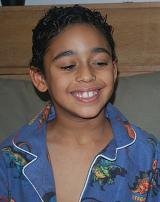
This is my brother !!!
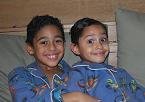
He is my best friend and as you can see he is a comedian!
Birth of Godzilla 1952
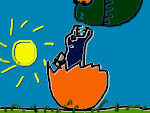
This is the birth of Godzilla made in 1952. In this scene Godzilla is coming out of an egg. Awww, how cute!
Anguirus
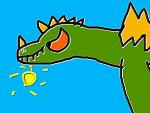
This will be an animation called Anguirus.
Zilla
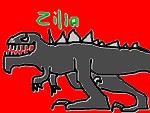
This is the American Godzilla. There is also a Japanese one.
Godzilla Tokyo SOS

This is called Godzilla Tokyo SOS and he is destroying an Island City.
Godzilla vs. Barney and his stinkin' friends
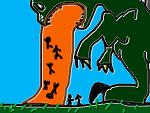
This is Godzilla vs. Barney and his stinkin' friends who didn't take a bath. Godzilla is having them for dinner. Everyone except Ryan and me because Godzilla really likes us!
Godzilla vs. Rodan
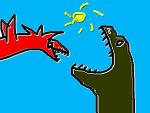
This will be a movie called Godzilla vs. Fire Rodan.
Mecha King Ghidorah

This is called Mecha King Ghidorah. This will be part of the Godzilla King of the Monsters series.
Rodan
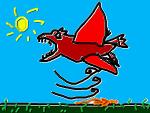
This is fire Rodan. He changes color and becomes fire Rodan.
Godzilla's Revenge
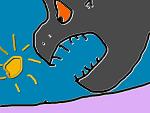
This is called Godzilla's revenge. He is catching a human.
Godzilla's Muscles
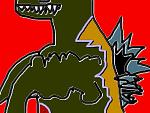
These are Godzillas muscles. Godzilla is very strong.
Godzilla bites Barney's stinkin' head off
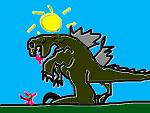
This is Godzilla vs. Barney. In this scene Godzilla is biting Barney's stinkin' head off.
Godzilla Attacks 1993
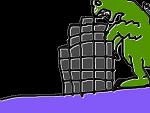
This is Godzilla 1993. He is destroying the city of Tokyo.
Godzilla 1954
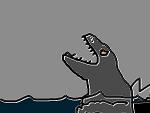
This is Godzilla 1954. This scene is Black and White and he is coming out of the water. Tune in for more! Thanks for watching!
About my Godzilla installations...
So, those are my kid pix installations up there. But before I go on, I must inform you that it is not all fun and games here. Or maybe it is, you decide? You see, my mom turns everything into a learning adventure. You may look at my interest in Godzilla and see just that, a toy Godzilla. My mom however sees Math, Science , Social Studies, you name it, in everything that we do. For instance, when I make Godzilla toys, we measure them, each and everyone. Ryan helps! And, that’s math! I also have a strong interest in exporting my toys and opening my own Godzilla store. So, we work a lot with money and learning about the business of exporting, and that’s also math! Godzilla can be made from many different types of materials ... plastic, vinyl, clay, etc… . And, these materials can be mixed with other chemicals to make the toy more durable. That’s science! And, I like science! So does Ryan! We also looove learning about Tokyo, Japanese yen, and the Japanese language when we play with Godzilla. Here is a google map that we made of Godzilla destroying buildings around Tokyo (see below). I learned a lot about the city this way. That’s Social Studies! So you get the idea. Now Ryan has something to say. "I have Godzilla unleashed." "And, I have an Anguirus toy." "I have a King Ghidorah toy." "AND I have a Gigan toy." Alright alright Ryan that’s enough. "No, no I have something else to say." What is it? "I also have a Mothra toy!" Okay, okay, (covering Ryan's mouth) back to you people, here are some of my drawings of Godzilla. And some that Ryan drew. I just love my little brother:)!
Godzilla Destroys Tokyo
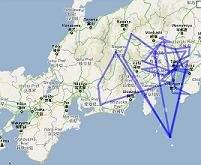
You can learn all about Tokyo and other cities in Japan from the map that I made.
American Godzilla

He's roaring! Rrrrr!
Godzilla destroys all monsters
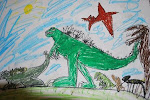
This is an animation and a future movie.
Godzilla 2000
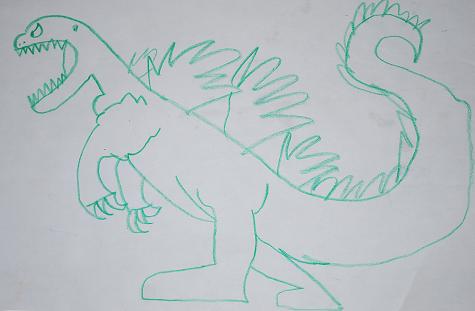
This is a picture of Godzilla 2000. It is a good one.
Allosaurus

This is an Allosaurus! It is from walking with dinosaurs.
Young Allosaurus
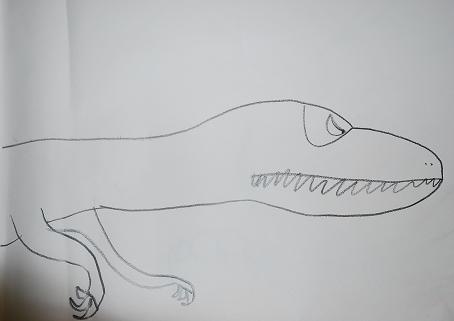
This is a 3 year old Allosaurus. He is pretty much of a grown up like in walking with dinosaurs. He is creeping up on a Ornitholestes.
Godzilla's FOOT
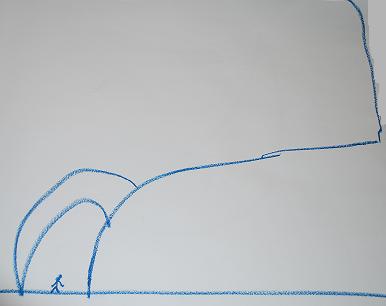
This is godzilla's foot. Look at how big it is compared to how big we are. If he stomped on us, he would crush us!
Godzilla's BIG mouth
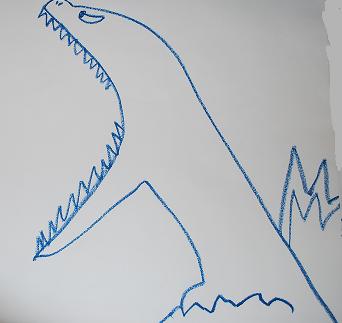
This is part of an animation. A BIG one too just like Godzilla's BIG mouth and foot. In this part of the animation he is roaring. What do you think he'll do next?
Scary T-REX
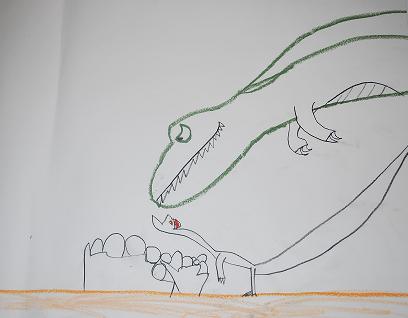
This animation is of a t-rex growling at an Oviraptor. The t-rex is really angry. Do you think he'll eat him?



































